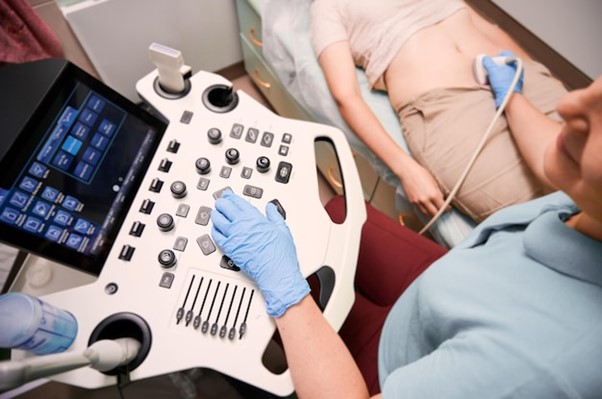Renal Artery Doppler

Renal artery Doppler ultrasound is a diagnostic imaging test used to evaluate blood flow within the renal arteries, which supply blood to the kidneys. This non-invasive procedure helps assess renal artery stenosis, renal artery occlusion, and other vascular abnormalities affecting kidney function. Renal artery Doppler ultrasound provides valuable information about renal blood flow and aids in the diagnosis and management of renal vascular diseases.
Purpose of Renal Artery Doppler Ultrasound
Assessing Renal Artery Stenosis
One of the primary purposes of renal artery Doppler ultrasound is to assess for renal artery stenosis, a narrowing of the renal arteries typically caused by atherosclerosis or fibromuscular dysplasia. Renal artery stenosis can lead to decreased blood flow to the kidneys, hypertension, and impaired kidney function.
Diagnosing Renal Artery Occlusion
Renal artery Doppler ultrasound is also used to diagnose renal artery occlusion, a blockage of the renal artery that can result in ischemia (lack of blood flow) and acute kidney injury. Prompt diagnosis and intervention are essential to prevent permanent damage to the kidneys.
Procedure of Renal Artery Doppler Ultrasound
Preparation and Process
Renal artery Doppler ultrasound is performed in a clinic or hospital setting by a trained ultrasound technician or radiologist. The procedure involves the following steps:
Patient Preparation: The patient may be asked to fast for a few hours before the test to minimize intestinal gas interference. Additionally, certain medications that affect blood flow may need to be temporarily discontinued prior to the test.
Ultrasound Gel Application: A gel is applied to the abdomen overlying the area where the renal arteries are located. This helps ensure good contact between the skin and the ultrasound transducer, allowing for clear imaging.
Transducer Placement: A handheld device called a transducer is placed on the abdomen and moved to visualize the renal arteries. The transducer emits high-frequency sound waves that bounce off the blood vessels, producing real-time images of blood flow.
Image Acquisition: The ultrasound machine captures images of blood flow within the renal arteries. Doppler technology is used to measure the speed and direction of blood flow, as well as detect any abnormalities such as stenosis or occlusion.
Assessment: The images and Doppler waveforms obtained during the test are analyzed to assess renal artery anatomy, blood flow velocity, and the presence of any vascular abnormalities.
Clinical Applications
Diagnosis of Renal Artery Stenosis
Renal artery Doppler ultrasound helps diagnose renal artery stenosis by identifying focal narrowing or turbulence in blood flow within the renal arteries. This information guides further evaluation and treatment decisions, such as angiography or renal artery stenting.
Evaluation of Renal Artery Blood Flow
The test provides valuable information about renal artery blood flow, including peak systolic velocity, end-diastolic velocity, and resistive index. Abnormalities in these parameters may indicate underlying renal vascular disease or impaired kidney function.
Advantages and Limitations
Advantages: Renal artery Doppler ultrasound is a non-invasive, safe, and cost-effective imaging modality for assessing renal artery anatomy and blood flow. It provides real-time images and quantitative data, aiding in the diagnosis and management of renal vascular diseases.
Limitations: While renal artery Doppler ultrasound is valuable for detecting renal artery stenosis and other vascular abnormalities, it has limitations in obese patients or those with bowel gas interference, which may affect image quality. Additionally, interpretation of results requires expertise in renal Doppler imaging.
Integration with Healthcare
Renal artery Doppler ultrasound is often integrated into the diagnostic workup of patients with suspected renal artery stenosis or renal vascular disease. It complements other imaging modalities, such as computed tomography angiography (CTA) or magnetic resonance angiography (MRA), and clinical assessments to provide a comprehensive evaluation of renal vascular health. Treatment decisions are guided by the findings of renal artery Doppler ultrasound, aiming to optimize renal blood flow and preserve kidney function. Regular follow-up may be recommended to monitor disease progression and treatment efficacy.

